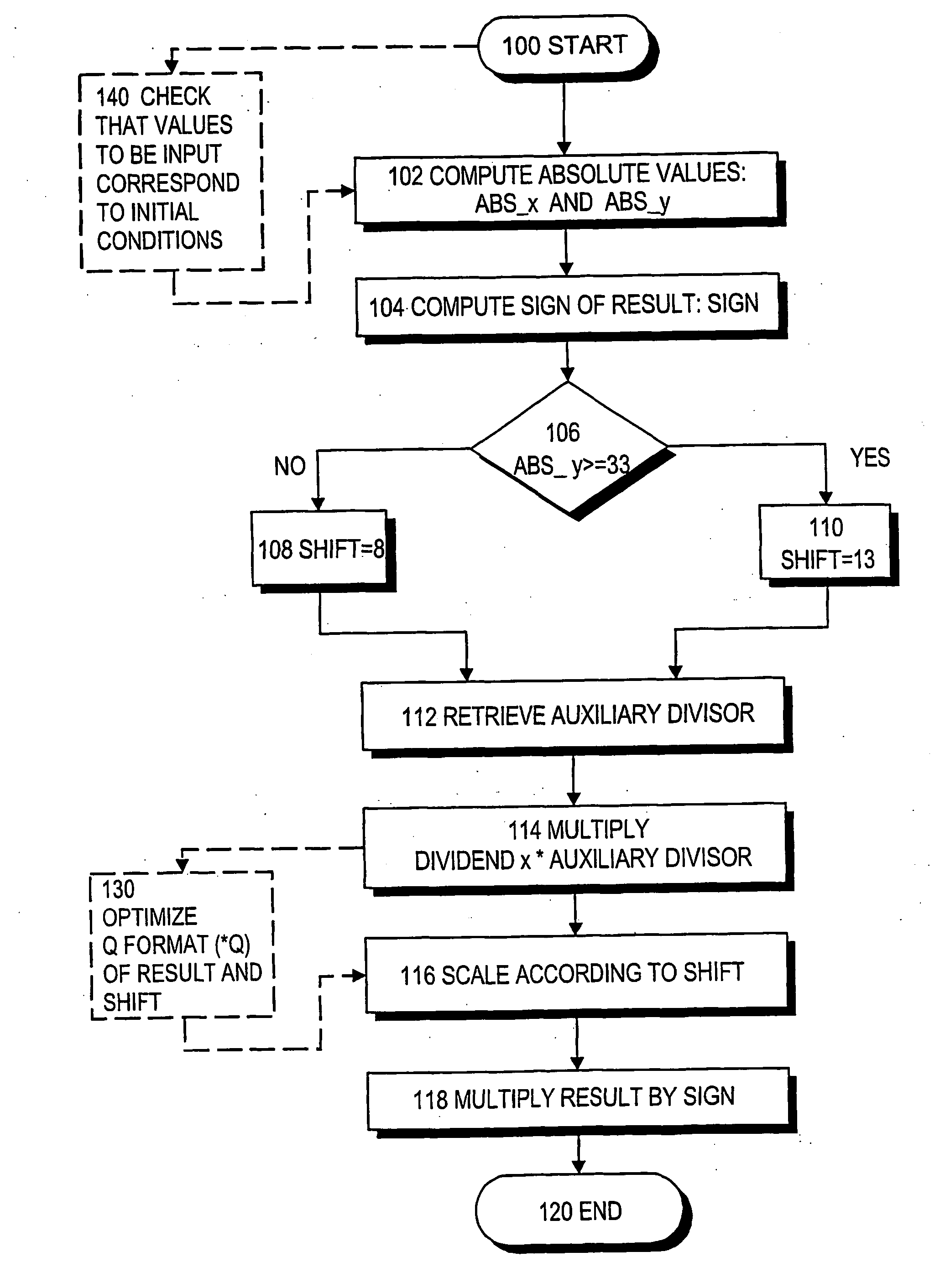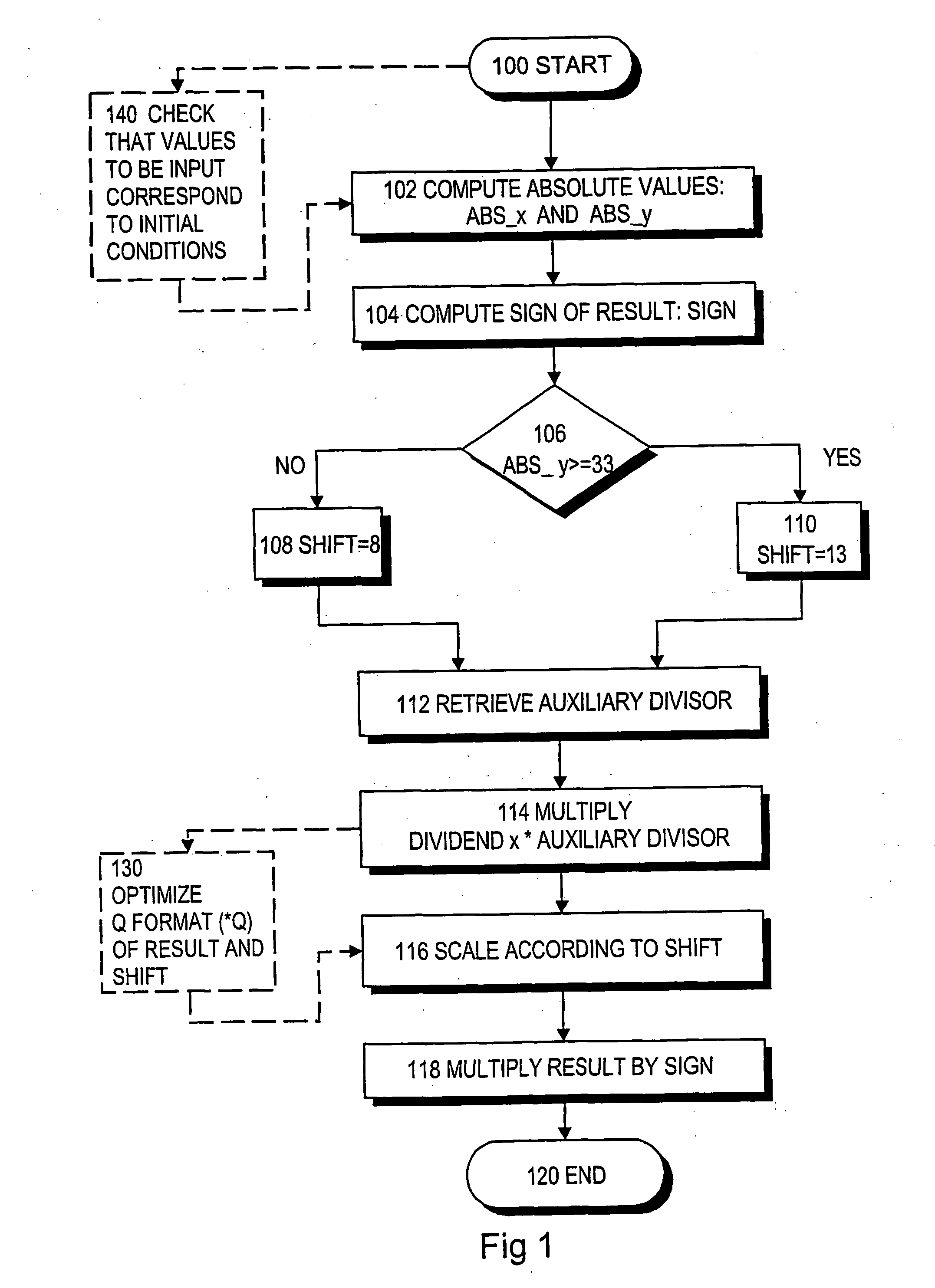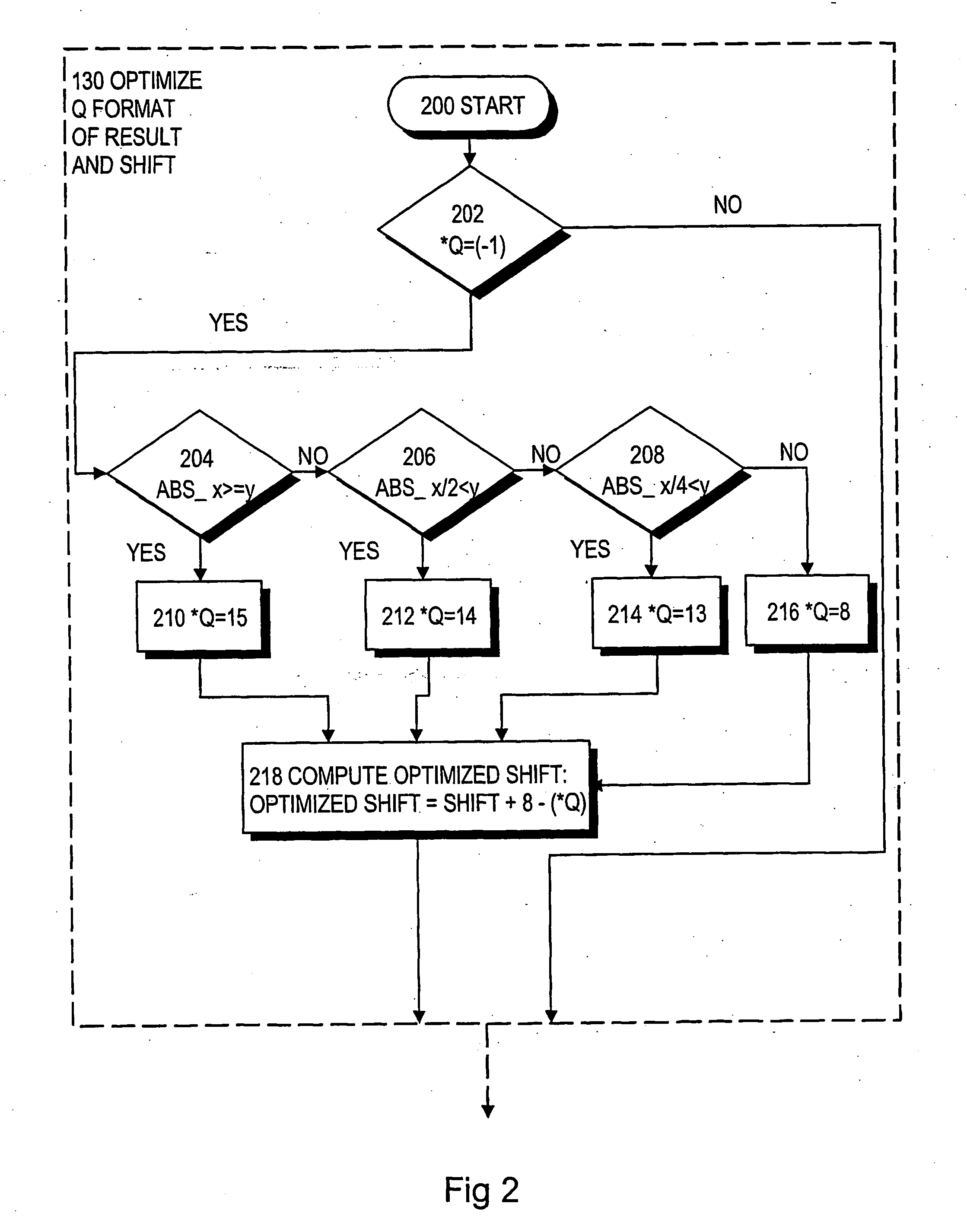Method and apparatus for executing division
a division and division method technology, applied in the field of executing division, can solve the problems of slowness, high number of iterations required in some cases, and the decimal part of the quotient is not obtained directly, and achieves fast calculation, simple and fast, and fast execution multiplication.
- Summary
- Abstract
- Description
- Claims
- Application Information
AI Technical Summary
Benefits of technology
Problems solved by technology
Method used
Image
Examples
Embodiment Construction
[0022] The method of executing division is described with reference to FIG. 1. The program printout of the solution of the preferred embodiment according to FIG. 1 is shown in Appendices 1 and 3.
[0023] In the preferred embodiment of FIG. 1, the assumption is that dividend x and divisor y are 8-bit signed integers, see Appendix 1, printout 1, and Appendix 3, printout 6, and the desired result is a 16-bit signed integer in the Q8 format, see Appendix 1, printout 1, and Appendix 3, printout 6. However, in the method, the number of bits is not limited, but the size of the table and the amount of memory used are kept small when the number of bits used is as in the preferred embodiment of FIG. 1.
[0024] The Q format is a 16-bit format, wherein a given number of bits designate the integer part of a number and a given number of bits the decimal part of the number. In the Q format, the parameter after Q indicates the number of bits reserved for the decimal part of the number. Correspondingly,...
PUM
 Login to View More
Login to View More Abstract
Description
Claims
Application Information
 Login to View More
Login to View More - R&D
- Intellectual Property
- Life Sciences
- Materials
- Tech Scout
- Unparalleled Data Quality
- Higher Quality Content
- 60% Fewer Hallucinations
Browse by: Latest US Patents, China's latest patents, Technical Efficacy Thesaurus, Application Domain, Technology Topic, Popular Technical Reports.
© 2025 PatSnap. All rights reserved.Legal|Privacy policy|Modern Slavery Act Transparency Statement|Sitemap|About US| Contact US: help@patsnap.com



